



Find all of your laboratory and workplace safety supplies at Safety Emporium!
 Prostation |
 Glossary Index |
 Pyrophoric |
| MSDS Topics |
Free Sites | FAQ's | Regulations | Glossary | Software | Suppliers |
| Books | Forum | Poll | Fun stuff | Quiz | Store | |
| Understand your MSDS with the MS-Demystifier | Search ALL our MSDS info | |||||
Precautionary Statements (P-Statments) are part of the Globally Harmonized System of Classification and Labeling of Chemicals (GHS). Precautionary statements provide standardized wording and/or pictograms to describe recommended measures that should be taken to minimize or prevent adverse effects resulting from exposures to a hazardous product, or improper storage, handling, or disposal of a hazardous product.
The GHS also has Hazard Statements which provide standardized hazard wordings. You will usually find both P- and H-statements on a label or Safety Data Sheet.
In the European Union, P-statements have replaced Safety phrases (S-phrases) with the adoption of the GHS under Regulation (EC) No 1272/2008 (20 MB PDF file).
Precautionary statements are assigned a unique numerical code which can be used as a handy reference when translating labels and SDS's written in other languages. The codes are not a substitute for writing out the entire text of the statement.
The codes have the form Pnxx where P stands for "Precautionary Statement", xx is a sequential numbering scheme, and the value of n refers to:
Thus, a Safety Data Sheet or label might bear a statement such as "Pressurized container; Do not pierce or burn, even after use (P251)". P indicates a Precautionary Statement, the 2 indicates it is a prevention precautionary statement, and 51 is part of the numbering scheme.
| Code | General Precautionary Statement | Hazard Class (GHS Chapter) | Hazard Category | Conditions for Use |
|---|---|---|---|---|
| P101 | If medical advice is needed, have product container or label at hand. | as appropriate | Consumer Products | |
| P102 | Keep out of reach of children. | as appropriate | Consumer Products | |
| P103 | Read label before use. | as appropriate | Consumer Products |
| Code | General Precautionary Statement | Hazard Class (GHS Chapter) | Hazard Category | Conditions for Use |
|---|---|---|---|---|
| P201 | Obtain special instructions before use. | Explosives (Chapter 2.1) | Unstable explosive | |
| Germ cell mutagenicity (chapter 3.5) | 1A, 1B, 2 | |||
| Carcino | 1A, 1B, 2 | |||
| Repro | 1A, 1B, 2 | |||
| Repro | Additonal Category | |||
| P202 | Do not handle until all safety precautions have been read and understood. | Explosives (Chapter 2.1) | Unstable explosive | |
| Germ cell mutagenicity (chapter 3.5) | 1A, 1B, 2 | |||
| Carcino | 1A, 1B, 2 | |||
| Repro | 1A, 1B, 2 | |||
| P210 | Keep away from heat | Explosives (Chapter 2.1) | Divisions 1.1, 1.2, 1.3, 1.4, 1.5 | |
| Flammable gases (chapter 2.2) | 1, 2 | |||
| Flammable aerosols (chapter 2.3) | 1, 2 | |||
| Flammable liquids (chapter 2.6) | 1, 2, 3 | |||
| Flammable solids (chapter 2.7) | 1, 2 | |||
| Self-reactive substances and mixtures (chapter 2.8) | Types A, B, C, D, E, F | |||
| Pyrophoric liquids (chapter 2.9) | 1 | |||
| Pyrophoric solids (chapter 2.10) | 1 | |||
| Organic peroxides (chapter 2.15) | Types A, B, C, D, E, F | |||
| Flammable liquids (chapter 2.6) | 4 | specify to keep away from flames and hot surfaces | ||
| Oxidizing liquids (chapter 2.13) | 1, 2, 3 | specify to keep away from heat | ||
| Oxidizing solids (chapter 2.14) | 1, 2, 3 | |||
| P211 | Do not spray on an open flame or other ignition source. | Flammable aerosols (chapter 2.3) | 1, 2 | |
| P220 | Keep | Oxidizing gases (chapter 2.4) | 1 | ... Manufac |
| Self-reactive substances and mixtures (chapter 2.8) | Types A, B, C, D, E, F | |||
| Oxidizing liquids (chapter 2.13) | 2, 3 | |||
| Oxidizing solids (chapter 2.14) | 2, 3 | |||
| Organic peroxides (chapter 2.15) | Types A, B, C, D, E, F | |||
| Oxidizing liquids (chapter 2.13) | 1 | - specify to keep away from clothing and other combust | ||
| Oxidizing solids (chapter 2.14) | 1 | |||
| P221 | Take any precaution to avoid mixing with combustibles/.. | Oxidizing liquids (chapter 2.13) | 1, 2, 3 | ... Manufac |
| Oxidizing solids (chapter 2.14) | 1, 2, 3 | |||
| P222 | Do not allow contact with air. | Pyrophoric liquids (chapter 2.9) | 1 | |
| Pyrophoric solids (chapter 2.10) | 1 | |||
| P230 | Keep wetted with ... | Explosives (Chapter 2.1) | Divisions 1.1, 1.2, 1.3, 1.5 | ... Manufac - if drying out increases explosion hazard, except as needed for manufact |
| P231 | Handle under inert gas. | Substances and mixtures which, in contact with water, emit flammable gases (chapter 2.12) | 1, 2, 3 | |
| P232 | Protect from moisture. | Substances and mixtures which, in contact with water, emit flammable gases (chapter 2.12) | 1, 2, 3 | |
| P233 | Keep container tightly closed. | Flammable liquids (chapter 2.6) | 1, 2, 3 | |
| Acute | 1, 2, 3 | - if product is volatile so as to generate hazardous atmo | ||
| Specific target organ | 3 | |||
| Specific target organ | 3 | |||
| P234 | Keep only in original container. | Self-reactive substances and mixtures (chapter 2.8) | Types A, B, C, D, E, F | |
| Organic peroxides (chapter 2.15) | Types A, B, C, D, E, F | |||
| Substances and mixtures corrosive to metals (chapter 2.16) | 1 | |||
| P235 | Keep cool. | Flammable liquids (chapter 2.6) | 1, 2, 3, 4 | |
| Self-reactive substances and mixtures (chapter 2.8) | Types A, B, C, D, E, F | |||
| Self-heating substances and mixtures (chapter 2.11) | 1 ,2 | |||
| Organic peroxides (chapter 2.15) | Types A, B, C, D, E, F | |||
| P240 | Ground | Explosives (chapter 2.1) | Divisions 1.1, 1.2, 1.3, 1.4, 1.5 | - If the explosive is electro |
| Flammable liquids (chapter 2.6) | 1, 2, 3 | - if electro - if product is volatile so as to generate hazardous atmo | ||
| Flammable solids (chapter 2.7) | 1, 2 | - if electro | ||
| P241 | Use explosion-proof
electrical | Flammable liquids (chapter 2.6) | 1, 2, 3 | ...Manufac |
| Flammable solids (chapter 2.7) | 1, 2 | ...Manufac - if dust clouds can occur. | ||
| P242 | Use only non-sparking tools. | Flammable liquids (chapter 2.6) | 1, 2, 3 | |
| P243 | Take precautionary measures against static discharge. | Flammable liquids (chapter 2.6) | 1, 2, 3 | |
| P250 | Do not subject to grinding | Explosives (chapter 2.1) | Divisions 1.1, 1.2, 1.3, 1.4, 1.5 | ...Manufac |
| P251 | Pressurized container: Do not pierce or burn, even after use. | Flammable aerosols (chapter 2.3) | 1,2 | |
| P260 | Do not breathe
dust | Acute | 1, 2 | Manufac |
| Specific target organ | 1, 2 | |||
| Specific target organ | 1, 2 | |||
| Skin corrosion (chapter 3.2) | 1A, 1B, 1C | - specify do not breathe dusts or mists - if inhalable particles of dusts or mists may occur during use. | ||
| Repro | Additional category | |||
| P261 | Avoid breathing
dust | Acute | 3, 4 | Manufac |
| Respiratory sensitization (chapter 3.4) | 1 | |||
| Skin sensitization (chapter 3.4) | 1 | |||
| Specific target organ | 3 | |||
| Specific target organ | 3 | |||
| P262 | Do not get in eyes, on skin, or on clothing. | Acute | 1, 2 | |
| P263 | Avoid contact during pregnancy | Repro | Additional category | |
| P264 | Wash...thoroughly after handling | Acute | 1, 2, 3, 4 | ...Manufac |
| Acute | 1, 2 | |||
| Skin corrosion (chapter 3.2) | 1A, 1B, 1C | |||
| Skin irritation (chapter 3.2) | 2 | |||
| Eye irritation (chapter 3.3) | 2A, 2B | |||
| Repro | Additional category | |||
| Specific target organ | 1, 2 | |||
| Specific target organ | 1 | |||
| P270 | Do not eat, drink or smoke when using this product. | Acute | 1, 2, 3, 4 | |
| Acute | 1, 2, 3, 4 | |||
| Repro | Additional category | |||
| Specific target organ | 1, 2 | |||
| Specific target organ | 1 | |||
| P271 | Use only outdoors or in a well-ventilated area | Acute | 1, 2, 3, 4 | |
| Specific target organ | 3 | |||
| Specific target organ | 3 | |||
| P272 | Contaminated work clothing should not be allowed out of the workplace. | Skin sensitization (chapter 3.4) | 1 | |
| P273 | Avoid release to the environment. | Hazardous to the aquatic environment, acute | 1, 2, 3 | - if this is not the intended use |
| Hazardous to the aquatic environment, chronic | 1, 2, 3, 4 | |||
| P280 | Wash...thoroughly after handling | Explosives (chapter 2.1) | Divisions 1.1, 1.2, 1.3, 1.4, 1.5 | Specify face protection. Manufac |
| Flammable liquids (chapter 2.6) | 1, 2, 3, 4 | - Specify protective gloves and eye Manufac | ||
| Flammable solids (chapter 2.7) | 1, 2 | |||
| Self-reactive substances and mixtures (chapter 2.8) | Types A, B, C, D, E, F | |||
| Pyrophoric liquids (chapter 2.9) | 1 | |||
| Pyrophoric solids (chapter 2.10) | 1 | |||
| Self-heating substances and mixtures (chapter 2.11) | 1, 2 | |||
| Substances and mixtures which, in contact with water, emit flammable gases (chapter 2.12) | 1, 2, 3 | |||
| Oxidizing liquids (chapter 2.13) | 1, 2, 3 | |||
| Oxidizing solids (chapter 2.14) | 1, 2, 3 | |||
| Organic peroxides (chapter 2.15) | Types A, B, C, D, E, F | |||
| Acute | 1, 2, 3, 4 | - Specify protective gloves Manufac | ||
| Skin corrosion (chapter 3.2) | 1A, 1B, 1C | - Specify protective gloves Manufac | ||
| Skin irritation (chapter 3.2) | 2 | - Specify protective gloves. Manufac | ||
| Skin sensitization (chapter 3.4) | 1 | |||
| Severe eye damage (chapter 3.3) | 1 | - Specify eye Manufac | ||
| Eye irritation (chapter 3.3) | 2A | |||
| P281 | Use personal protective equipment as required. | Explosives (chapter 2.1) | Unstable Explosives | |
| Germ cell mutagenicity (chapter 3.5) | 1A, 1B, 2 | |||
| Carcino | 1A, 1B, 2 | |||
| Repro | 1A, 1B, 2 | |||
| P282 | Wear cold insulating gloves | Gases under pressure (chapter 2.5) | Refrigerated liquefied gas | |
| P283 | Wear fire | Oxidizing liquids (chapter 2.13) | 1 | |
| Oxidizing solids (chapter 2.14) | 1 | |||
| P284 | Wear respiratory protection. | Acute | 1, 2 | Manufac |
| P285 | In case of inadequate ventilation wear respiratory protection. | Respiratory sensitization (chapter 3.4) | 1 | Manufac |
| P231 + P232 | Handle under inert gas. Protect from moisture. | Substances and mixtures which, in contact with water, emit flammable gases (chapter 2.12) | 1, 2, 3 | |
| P235 + P410 | Keep cool. Protect from sunlight. | Self-heating substances and mixtures (chapter 2.11) | 1, 2 | |
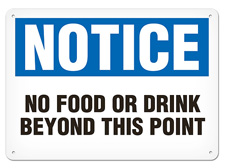
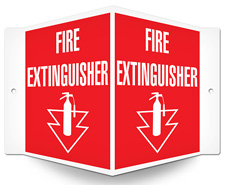
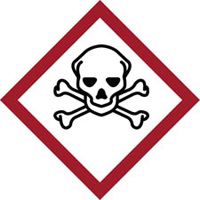
Safety Emporium carries all kinds of signs to help protect your workplace. | ||||
| Code | Response Precautionary Statement | Hazard Class (GHS Chapter) | Hazard Category | Conditions for Use |
|---|---|---|---|---|
| P301 | IF SWALLOWED: | Acute toxicity, oral (chapter 3.1) | 1, 2, 3, 4 | |
| Skin corrosion (chapter 3.2) | 1A, 1B, 1C | |||
| Aspiration hazard (chapter 3.10) | 1, 2 | |||
| P303 | IF ON SKIN: | Pyrophoric liquids (chapter 2.9) | 1 | |
| Acute toxicity, dermal (chapter 3.1) | 1, 2, 3, 4 | |||
| Skin irritation (chapter 3.2) | 2 | |||
| Skin sensitization (chapter 3.4) | 1 | |||
| P302 | IF ON SKIN (or hair): | Flammable liquids (chapter 2.6) | 1, 2, 3 | |
| Skin corrosion (chapter 3.2) | 1A, 1B, 1C | |||
| P304 | IF INHALED: | Acute toxicity, inhalation (chapter 3.1) | 1, 2, 3, 4, 5 | |
| Skin corrosion (chapter 3.2) | 1A, 1B, 1C | |||
| Respiratory sensitization (chapter 3.4) | 1 | |||
| Specific target organ toxicity, single exposure; respiratory tract irritation (chapter 3.8) | 3 | |||
| Specific target organ toxicity, single exposure; narcotic effects (chapter 3.8) | 3 | |||
| P305 | IF IN EYES: | Skin corrosion (chapter 3.2) | 1A, 1B, 1C | |
| Severe eye damage (chapter 3.3) | 1 | |||
| Eye irritation (chapter 3.3) | 2A, 2B | |||
| P306 | IF ON CLOTHING: | Oxidizing liquids (chapter 2.13) | 1 | |
| Oxidizing solids (chapter 2.14) | 1 | |||
| P307 | IF exposed: | Specific target organ toxicity, single exposure (chapter 3.8) | 1 | |
| P308 | IF exposed or concerned: | Germ cell mutagenicity (chapter 3.5) | 1A, 1B, 2 | |
| Carcino | 1A, 1B, 2 | |||
| Repro | 1A, 1B, 2 | |||
| Repro | Additional Category | |||
| P309 | IF exposed or if you feel unwell: | Specific target organ toxicity, single exposure (chapter 3.8) | 2 | |
| P310 | Immediately call a POISON CENTER or
doctor | Acute toxicity, oral (chapter 3.1) | 1, 2, 3 | |
| Acute toxicity, dermal (chapter 3.1) | 1, 2 | |||
| Acute toxicity, inhalation (chapter 3.1) | 1, 2 | |||
| Skin corrosion (chapter 3.2) | 1A, 1B, 1C | |||
| Severe eye damage (chapter 3.3) | 1 | |||
| >Aspiration hazard (chapter 3.10) | 1, 2 | |||
| P311 | Call a POISON CENTER or doctor | Acute toxicity, inhalation (chapter 3.1) | 3 | |
| Respiratory sensitization (chapter 3.4) | 1 | |||
| Specific target organ toxicity, single exposure (chapter 3.8) | 1,2 | |||
| P312 | Call a POISON CENTER or doctor | Acute toxicity, oral (chapter 3.1) | 4 | |
| Acute toxicity, oral (chapter 3.1) | 5 | |||
| Acute toxicity, dermal (chapter 3.1) | 3, 4, 5 | |||
| Acute toxicity, inhalation (chapter 3.1) | 4 | |||
| Acute toxicity, inhalation (chapter 3.1) | 5 | |||
| Specific target organ toxicity, single exposure; respiratory tract irritation (chapter 3.8) | 3 | |||
| Specific target organ toxicity, single exposure; narcotic effects (chapter 3.8) | 3 | |||
| P313 | Get medical advice | Skin irritation (chapter 3.2) | 2, 3 | |
| Eye irritation (chapter 3.3) | 2A, 2B | |||
| Skin sensitization (chapter 3.4) | 1 | |||
| Germ cell mutagenicity (chapter 3.5) | 1A, 1B, 2 | |||
| Carcino | 1A, 1B, 2 | |||
| Repro | 1A, 1B, 2 | |||
| Repro | Additional category | |||
| P314 | Get medical advice | Specific target organ toxicity, repeated exposure (chapter 3.8) | 1, 2 | |
| P315 | Get immediate medical advice | Gases under pressure (chapter 2.5) | Refrigerated liquefied gas | |
| P320 | Specific treatment is urgent (see ... on this label). | Acute toxicity, inhalation (chapter 3.1) | 1, 2 | ...Reference to supplemental first aid instruction. - if immediate administration of antidote is required. |
| P321 | Specific treatment (see ... on this label). | Acute toxicity, oral (chapter 3.1) | 1, 2 | ...Reference to supplemental first aid instruction. - if immediate administration of antidote is required. |
| Acute toxicity, inhalation (chapter 3.1) | 3 | ...Reference to supplemental first aid instruction. - if immediate specific measures are required. | ||
| Skin corrosion (chapter 3.2) | 1A, 1B, 1C | ...Reference to supplemental first aid instruction. - Manufac | ||
| Skin irritation (chapter 3.2) | 2 | |||
| Skin sensitization (chapter 3.4) | 1 | |||
| Specific target organ toxicity, single exposure (chapter 3.8) | 1 | ...Reference to supplemental first aid
instruction. - if immediate measures are required. | ||
| P322 | Specific measures (see ... on this label). | Acute toxicity, dermal (chapter 3.1) | 1, 2 | ...Reference to supplemental first aid instruction. - if immediate measures such as specific cleansing agent is advised. |
| Acute toxicity, dermal (chapter 3.1) | 3, 4 | |||
| P330 | Rinse mouth. | Acute toxicity, oral (chapter 3.1) | 1, 2, 3, 4 | |
| Skin corrosion (chapter 3.2) | 1A, 1B, 1C | |||
| P331 | Do NOT induce vomiting. | Skin corrosion (chapter 3.2) | 1A, 1B, 1C | |
| >Aspiration hazard (chapter 3.10) | 1, 2 | |||
| P332 | If skin irritation occurs: | Skin sensitization (chapter 3.4) | 1 | |
| P333 | If skin irritation or rash occurs: | Skin sensitization (chapter 3.4) | 1 | |
| P334 | Immerse in cool water | Pyrophoric liquids (chapter 2.9) | 1 | |
| Pyrophoric solids (chapter 2.10) | 1 | |||
| Substances and mixtures which, in contact with water, emit flammable gases (chapter 2.12) | 1, 2 | |||
| P335 | Brush off loose particles from skin. | Pyrophoric solids (chapter 2.10) | 1 | |
| Substances and mixtures which, in contact with water, emit flammable gases (chapter 2.12) | 1, 2 | |||
| P336 | Thaw frosted parts with lukewarm water. Do not rub affected area. | Gases under pressure (chapter 2.5) | Refrigerated liquefied gas | |
| P337 | If eye irritation persists: | Eye irritation (chapter 3.3) | 2A, 2B | |
| P338 | Remove contact lenses, if present and easy to do. Continue rinsing. | Skin corrosion (chapter 3.2) | 1A, 1B, 1C | |
| Severe eye damage (chapter 3.3) | 1 | |||
| Eye irritation (chapter 3.3) | 2A, 2B | |||
| P340 | Remove victim to fresh air and keep at rest in a position comfortable for breathing. | Acute toxicity, inhalation (chapter 3.1) | 1, 2, 3, 4 | |
| Skin corrosion (chapter 3.2) | 1A, 1B, 1C | |||
| Specific target organ toxicity, single exposure; respiratory tract irritation (chapter 3.8) | 3 | |||
| Specific target organ toxicity, single exposure; narcotic effects (chapter 3.8) | 3 | |||
| P341 | If breathing is difficult, remove victim to fresh air and keep at rest in a position comfortable for breathing. | Respiratory sensitization (chapter 3.4) | 1 | |
| P342 | If experiencing respiratory symptoms: | Respiratory sensitization (chapter 3.4) | 1 | |
| P350 | Gently wash with plenty of soap and water. | Acute toxicity, dermal (chapter 3.1) | 1, 2 | |
| P351 | Rinse cautiously with water for several minutes. | Skin corrosion (chapter 3.2) | 1A, 1B, 1C | |
| Severe eye damage (chapter 3.3) | 1 | |||
| Eye irritation (chapter 3.3) | 2A, 2B | |||
| P352 | Wash with plenty of soap and water. | Acute toxicity, dermal (chapter 3.1) | 3, 4 | |
| Skin irritation (chapter 3.2) | 2 | |||
| Skin sensitization (chapter 3.4) | 1 | |||
| P353 | Rinse skin with water | Flammable liquids (chapter 2.6) | 1, 2, 3 | |
| Skin corrosion (chapter 3.2) | 1A, 1B, 1C | |||
| P360 | Rinse immediately contaminated clothing and skin with plenty of water before removing clothes. | Oxidizing liquids (chapter 2.13) | 1 | |
| Oxidizing solids (chapter 2.14) | 1 | |||
| 361 | Remove | Flammable liquids (chapter 2.6) | 1, 2, 3 | |
| Acute toxicity, dermal (chapter 3.1) | 1, 2, 3 | |||
| Skin corrosion (chapter 3.2) | 1A, 1B, 1C | |||
| P362 | Take off contaminated clothing and wash before reuse. | Skin irritation (chapter 3.2) | 2 | |
| P363 | Wash contaminated clothing before reuse. | Acute toxicity, dermal (chapter 3.1) | 1, 2, 3 | |
| Acute toxicity, dermal (chapter 3.1) | 4 | |||
| Skin corrosion (chapter 3.2) | 1A, 1B, 1C | |||
| Skin sensitization (chapter 3.4) | 1 | |||
| P370 | In case of fire: | Explosives (chapter 2.1) | Divisions 1.1, 1.2, 1.3, 1.4, 1.5 | |
| Oxidizing gases (chapter 2.4) | 1 | |||
| Flammable liquids (chapter 2.6) | 1, 2, 3, 4 | |||
| Flammable solids (chapter 2.7) | 1, 2 | |||
| Self-reactive substances and mixtures (chapter 2.8) | Types A, B, C, D, E, F | |||
| Pyrophoric liquids (chapter 2.9) | 1 | |||
| Pyrophoric solids (chapter 2.10) | 1 | |||
| Substances and mixtures which, in contact with water, emit flammable gases (chapter 2.12) | 1, 2, 3 | |||
| Oxidizing liquids (chapter 2.13) | 1, 2, 3 | |||
| Oxidizing solids (chapter 2.14) | 1, 2, 3 | |||
| P371 | In case of major fire and large quantities: | Oxidizing liquids (chapter 2.13) | 1 | |
| Oxidizing solids (chapter 2.14) | 1 | |||
| P372 | Explosion risk in case of fire. | Explosives (chapter 2.1) | Unstable explosives and Divisions 1.1, 1.2, 1.3, 1.4, 1.5 | - except if explosives are 1.4S AMMUNITION AND COMPONENTS THEREOF. |
| P373 | DO NOT fight fire when fire reaches explosives. | Explosives (chapter 2.1) | Unstable explosives and Divisions 1.1, 1.2, 1.3, 1.4, 1.5 | - except if explosives are 1.4S AMMUNITION AND COMPONENTS THEREOF. |
| P374 | Fight fire with normal precautions from a reasonable distance. | Explosives (chapter 2.1) | Division 1.4 | - if explosives are 1.4S AMMUNITION AND COMPONENTS THEREOF. |
| 375 | Fight fire remotely due to the risk of explosion | Self-reactive substances and mixtures (chapter 2.8) | Types A, B | |
| Oxidizing liquids (chapter 2.13) | 1 | |||
| Oxidizing solids (chapter 2.14) | 1 | |||
| P376 | Stop leak if safe to do so. | Oxidizing gases (chapter 2.4) | 1 | |
| P377 | Leaking gas fire: Do not extinguish, unless leak can be stopped safely. | Flammable gases (chapter 2.2) | 1, 2 | |
| P378 | Use ... for extinction. | Flammable liquids (chapter 2.6) | 1, 2, 3, 4 | ...Manufac - if water increases risk |
| Flammable solids (chapter 2.7) | 1, 2 | |||
| Self-reactive substances and mixtures (chapter 2.8) | Types A, B, C, D, E, F | |||
| Pyrophoric liquids (chapter 2.9) | 1 | |||
| Pyrophoric solids (chapter 2.10) | 1 | |||
| Substances and mixtures which, in contact with water, emit flammable gases (chapter 2.12) | 1, 2, 3 | |||
| Oxidizing liquids (chapter 2.13) | 1, 2, 3 | |||
| Oxidizing solids (chapter 2.14) | 1, 2, 3 | |||
| P380 | Evacuate area. | Explosives (chapter 2.1) | Unstable explosives | |
| Explosives (chapter 2.1) | Divisions 1.1, 1.2, 1.3, 1.4, 1.5 | |||
| Self-reactive substances and mixtures (chapter 2.8) | Types A, B | |||
| Oxidizing liquids (chapter 2.13) | 1 | |||
| Oxidizing solids (chapter 2.14) | 1 | |||
| P381 | Eliminate all ignition sources if safe to do so. | Flammable gases (chapter 2.2) | 1, 2 | |
| P390 | Absorb spillage to prevent material damage. | Substances and mixtures corrosive to metals (chapter 2.16) | 1 | |
| P391 | Collect spillage. | Hazardous to the aquatic environment, acute toxicity (chapter 4.1) | 1 | |
| Hazardous to the aquatic environment, chronic toxicity (chapter 4.1) | 1,2 | |||
| P391 | Collect spillage. | Hazardous to the aquatic environment, acute toxicity (chapter 4.1) | 1 | |
| Hazardous to the aquatic environment, chronic toxicity (chapter 4.1) | 1,2 | |||
| P301 + P310 | IF SWALLOWED: Immediately call a POISON CENTER or doctor | Acute toxicity, oral (chapter 3.1) | 1, 2, 3 | |
| >Aspiration hazard (chapter 3.10) | 1,2 | |||
| P301 + P312 | IF SWALLOWED: Call a POISON CENTER
or doctor | Acute toxicity, oral (chapter 3.1) | 4 | |
| P301 + P330 + P331 | IF SWALLOWED: Rinse mouth. Do NOT induce vomiting. | Skin corrosion (chapter 3.2) | 1A, 1B, 1C | |
| P302 + P334 | IF ON SKIN: Immerse in cool water | Pyrophoric liquids (chapter 2.9) | 1 | |
| P302 + P350 | IF ON SKIN: Gently wash with plenty of soap and water. | Acute toxicity, dermal (chapter 3.1) | 1, 2 | |
| P302 + P352 | IF ON SKIN: Wash with plenty of soap and water. | Acute toxicity, dermal (chapter 3.1) | 3, 4 | |
| Skin irritation (chapter 3.2) | 2 | |||
| Skin sensitization (chapter 3.4) | 1 | |||
| P303 + P361 + P353 | IF ON SKIN (or hair): Remove | Flammable liquids (chapter 2.6) | 1, 2, 3 | |
| Skin corrosion (chapter 3.2 | 1A, 1B, 1C | |||
| P304 + P312 | IF INHALED: Call a POISON CENTER or
doctor | Acute toxicity, inhalation (chapter 3.1) | 5 | |
| P304 + P340 | IF INHALED: Remove victim to fresh air and keep at rest in a position comfortable for breathing. | Acute toxicity, inhalation (chapter 3.1) | 1, 2, 3, 4 | |
| Skin corrosion (chapter 3.2) | 1A, 1B, 1C | |||
| Specific target organ toxicity, single exposure; respiratory tract irritation (chapter 3.8) | 3 | |||
| Specific target organ toxicity, single exposure; narcotic effects (chapter 3.8) | 3 | |||
| P304 + P341 | IF INHALED: If breathing is difficult, remove victim to fresh air and keep at rest in a position comfortable for breathing. | Respiratory sensitization (chapter 3.4) | 1 | |
| P305 + P351 + P338 | IF IN EYES: Rinse cautiously with water for several minutes. Remove contact lenses, if present and easy to do. Continue rinsing. | Skin corrosion (chapter 3.2) | 1A, 1B, 1C | |
| Severe eye damage (chapter 3.3) | 1 | |||
| Eye irritation (chapter 3.3) | 2A, 2B | |||
| P306 + P360 | IF ON CLOTHING: Rinse immediately contaminated clothing and skin with plenty of water before removing clothes. | Oxidizing liquids (chapter 2.13) | 1 | |
| Oxidizing solids (chapter 2.14) | 1 | |||
| P307 + P311 | IF exposed: Call a POISON CENTER or doctor | Specific target organ toxicity, single exposure (chapter 3.8) | 1 | |
| P308 + P313 | IF exposed or concerned: Get medical advice | Germ cell mutagenicity (chapter 3.5) | 1A, 1B, 2 | |
| Carcino | 1A, 1B, 2 | |||
| Repro | 1A, 1B, 2 | |||
| Repro | Additional category | |||
| P309 + P311 | IF exposed or if you feel unwell: Call a POISON
CENTER or doctor | Specific target organ toxicity, single exposure (chapter 3.8) | 2 | |
| P332 + P313 | If skin irritation occurs: Get medical advice | Skin irritation (chapter 3.2) | 2, 3 | |
| P333 + P313 | If skin irritation or rash occurs: Get medical
advice | Skin sensitization (chapter 3.4) | 1 | |
| P335 + P334 | Brush off loose particles from skin. Immerse in cool water | Pyrophoric solids (chapter 2.10) | 1 | |
| Substances and mixtures which, in contact with water, emit flammable gases (chapter 2.12) | 1, 2 | |||
| P337 + P313 | If eye irritation persists: Get medical
advice | Eye irritation (chapter 3.3) | 2A, 2B | |
| P342 + P311 | If experiencing respiratory symptoms: Call a
POISON CENTER or doctor | Respiratory sensitization (chapter 3.4) | 1 | |
| P370 + P376 | In case of fire: Stop leak if safe to do so. | Oxidizing gases (chapter 2.4) | 1 | |
| P370 + P378 | In case of fire: Use ... for extinction. | Flammable liquids (chapter 2.6) | 1, 2, 3, 4 | ...Manufac - if water increases risk. |
| Flammable solids (chapter 2.7) | 1, 2 | |||
| Self-reactive substances and mixtures (chapter 2.8) | Types A, B, C, D, E, F | |||
| Pyrophoric liquids (chapter 2.9) | 1 | |||
| Pyrophoric solids (chapter 2.10) | 1 | |||
| Substances and mixtures which, in contact with water, emit flammable gases (chapter 2.12) | 1, 2, 3 | |||
| Oxidizing liquids (chapter 2.13) | 1, 2, 3 | |||
| Oxidizing solids (chapter 2.14) | 1, 2, 3 | |||
| P370 + P380 | In case of fire: Evacuate area. Fight fire remotely due to the risk of explosion. | Explosives (chapter 2.1) | Divisions 1.1, 1.2, 1.3, 1.4, 1.5 | |
| P370 + P380 + P375 | In case of fire: Evacuate area. | Self-reactive substances and mixtures (chapter 2.8) | Types A, B | |
| P371 + P380 + P375 | In case of major fire and large quantities: Evacuate area. Fight fire remotely due to the risk of explosion. | Oxidizing liquids (chapter 2.13) | 1 | |
| Oxidizing solids (chapter 2.14) | 1 | |||
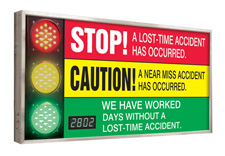


Equip your workplace with emergency response and prevention products from Safety Emporium. | ||||
| Code | Storage Precautionary Statement | Hazard Class (GHS Chapter) | Hazard Category | Conditions for Use |
|---|---|---|---|---|
| P401 | Store ... | Explosives (chapter 2.1) | Unstable explosives and Divisions 1.1, 1.2, 1.3, 1.4, 1.5 | ...in accordance with local |
| P402 | Store in a dry place. | Substances and mixtures which, in contact with water, emit flammable gases (chapter 2.12) | 1, 2, 3 | |
| P403 | Store in a dry place. | Flammable gases (chapter 2.2) | 1, 2 | |
| Oxidizing gases (chapter 2.4) | 1 | |||
| Gases under pressure (chapter 2.5) | Compressed gas | |||
| Liquefied gas | ||||
| Refrigerated Liquefied gas | ||||
| Dissolved gas | ||||
| Flammable liquids (chapter 2.6) | 1, 2, 3, 4 | |||
| Self-reactive substances and mixtures (chapter 2.8) | Types A, B, C, D, E, F | |||
| Acute toxicity, inhalation (chapter 3.1) | 1, 2, 3 | - if product is volatile so as to generate hazardous atmosphere. | ||
| Specific target organ toxicity, single exposure; respiratory tract irritation (chapter 3.8) | 3 | |||
| Specific target organ toxicity, single exposure; narcotic effects (chapter 3.8) | 3 | |||
| P404 | Store in a closed container. | Substances and mixtures which, in contact with water, emit flammable gases (chapter 2.12) | 1, 2, 3 | |
| P405 | Store locked up. | Acute toxicity, oral (chapter 3.1) | 1, 2, 3 | |
| Acute toxicity, dermal (chapter 3.1) | 1, 2, 3 | |||
| Acute toxicity, inhalation (chapter 3.1) | 1, 2, 3 | |||
| Skin corrosion (chapter 3.2) | 1A, 1B, 1C | |||
| Germ cell mutagenicity (chapter 3.5) | 1A, 1B, 2 | |||
| Carcino | 1A, 1B, 2 | |||
| Repro | 1A, 1B, 2 | |||
| Specific target organ toxicity, single exposure (chapter 3.8) | 1, 2 | |||
| Specific target organ toxicity, single exposure; respiratory tract irritation (chapter 3.8) | 3 | |||
| Specific target organ toxicity, single exposure; narcotic effects (chapter 3.8) | 3 | |||
| >Aspiration hazard (chapter 3.10) | 1, 2 | |||
| P406 | Store in corrosive resistant/... container with a resistant inner liner. | Substances and mixtures corrosive to metals (chapter 2.16) | 1, 2, 3 | ...Manufac |
| P407 | Maintain air gap between stacks | Self-heating substances and mixtures (chapter 2.11) | 1, 2 | |
| P410 | Protect from sunlight. | Flammable aerosols (chapter 2.3) | 1, 2 | |
| Gases under pressure (chapter 2.5) | Compressed gas | |||
| Liquefied gas | ||||
| Dissolved gas | ||||
| Self-heating substances and mixtures (chapter 2.11) | 1, 2 | |||
| Organic peroxides (chapter 2.15) | Types A, B, C, D, E, F | |||
| P411 | Store at temp | Self-reactive substances and mixtures (chapter 2.8) | Types A, B, C, D, E, F | ...Manufac |
| Organic peroxides (chapter 2.15) | Types A, B, C, D, E, F | |||
| P412 | Do not expose to temp | Flammable aerosols (chapter 2.3) | 1, 2 | |
| P413 | Store bulk masses greater than ... kg/... lbs at
temp | Self-heating substances and mixtures (chapter 2.11) | 1, 2 | ...Manufac |
| P420 | Store away from other materials. | Self-reactive substances and mixtures (chapter 2.8) | Types A, B, C, D, E, F | |
| Self-heating substances and mixtures (chapter 2.11) | 1,2 | |||
| Organic peroxides (chapter 2.15) | Types A, B, C, D, E, F | |||
| P420 | Store contents under ... | Pyrophoric liquids (chapter 2.9) | 1 | ...Manufac |
| Pyrophoric solids (chapter 2.10) | 1 | |||
| P402 + P404 | Store in a dry place. Store in a closed container. | Substances and mixtures which, in contact with water, emit flammable gases (chapter 2.12) | 1, 2, 3 | |
| P404 + P233 | Store in a well-ventilated place. Keep container tightly closed. | Acute toxicity, inhalation (chapter 3.1) | 1, 2, 3 | - if product is volatile so as to generate hazardous atmosphere. |
| Specific target organ toxicity, single exposure; respiratory tract irritation (chapter 3.8) | 3 | |||
| Specific target organ toxicity, single exposure; narcotic effects (chapter 3.8) | 3 | |||
| P403 + P235 | Store in a well-ventilated place. Keep cool. | Flammable liquids (chapter 2.6) | 1, 2, 3, 4 | |
| Self-reactive substances and mixtures (chapter 2.8) | Types A, B, C, D, E, F | |||
| P410 + P2403 | Protect from sunlight. Store in a well-ventilated place. | Gases under pressure (chapter 2.5) | Compressed gas | |
| Liquefied gas | ||||
| Dissolved gas | ||||
| P410 + P412 | Protect from sunlight. Do not expose to
temp | Flammable aerosols (chapter 2.3) | 1, 2 | |
| P411 + P235 | Store at temp | Organic peroxides (chapter 2.15) | Types A, B, C, D, E, F | ...Manufac |
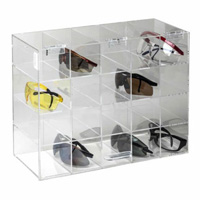
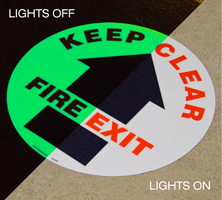
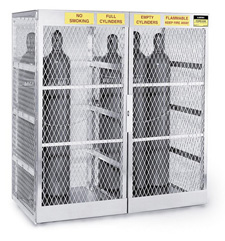
Ensure a safety working environment with safety products from Safety Emporium. | ||||
| Code | Storage Precautionary Statement | Hazard Class (GHS Chapter) | Hazard Category | Conditions for Use |
|---|---|---|---|---|
| P501 | Dispose of contents | Explosives (chapter 2.1) | Unstable explosives and Divisions 1.1, 1.2, 1.3, 1.4, 1.5 | ...in accordance with local |
| Flammable liquids (chapter 2.6) | 1, 2, 3, 4 | |||
| Self-reactive substances and mixtures (chapter 2.8) | Types A, B, C, D, E, F | |||
| Substances and mixtures which, in contact with water, emit flammable gases (chapter 2.12) | 1, 2, 3 | |||
| Oxidizing liquids (chapter 2.13) | 1, 2, 3 | |||
| Oxidizing solids (chapter 2.14) | 1, 2, 3 | |||
| Organic peroxides (chapter 2.15) | Types A, B, C, D, E, F | |||
| Acute toxicity, oral (chapter 3.1) | 1, 2, 3, 4 | |||
| Acute toxicity, dermal (chapter 3.1) | 1, 2, 3, 4 | |||
| Acute toxicity, inhalation (chapter 3.1) | 1, 2 | |||
| Skin corrosion (chapter 3.2) | 1A, 1B, 1C | |||
| Respiratory sensitization (chapter 3.4) | 1 | |||
| Skin sensitization (chapter 3.4) | 1 | |||
| Germ cell mutagenicity (chapter 3.5) | 1A, 1B, 2 | |||
| Carcino | 1A, 1B, 2 | |||
| Repro | 1A, 1B, 2 | |||
| Specific target organ toxicity, single exposure (chapter 3.8) | 1, 2 | |||
| Specific target organ toxicity, single exposure; respiratory tract irritation (chapter 3.8) | 3 | |||
| Specific target organ toxicity, single exposure; narcotic effects (chapter 3.8) | 3 | |||
| Specific target organ toxicity, repeated exposure (chapter 3.9) | 1,2 | |||
| >Aspiration hazard (chapter 3.10) | 1, 2 | |||
| Hazardous to the aquatic environment, acute toxicity (chapter 4.1) | 1, 2, 3 | |||
| Hazardous to the aquatic environment, chronic toxicity (chapter 4.1) | 1, 2, 3, 4 |
The US, Europe, and numerous other countries have adopted the Globally Harmonized System, which requires manufacturers and importers of potentially hazardous chemicals to perform a hazard classification of the materials they sell or import.

Encourage safety on the job with electronic safety scoreboards from Safety Emporium.
If that process, required under Paragraph (d) of 29 CFR 1910.1200, the OSHA Hazard Communication Standard (HCS 2012), indicates a potential hazard, it must be disclosed by both P- and H-statements (if necessary) on both the Safety Data Sheet (see paragraph (g)) and the label (see paragraph (f)).
Per Appendix D of HCS 2012, the H- and P-statements will appear in Section 2 of the SDS. Note: If a sheet was issued before the HCS 2012 took full effect the (M)SDS may not only be in a different format, it may not contain these statements. If you have a sheet like this in your collection you should attempt to find a current version. Remember that P-statements phrases only indicate the safety precautions that you need to follow when using the material, not the explicit hazards of the material. For hazards information see the Hazard Statements entry.
This section discusses SDS relevance, but the importance of H- and P-statements on labels is paramount so we will address that here. Per paragraph C.2.4 of Appendix C of HCS 2012, the P-statements will also appear on on the label, however they may sometimes be combined or omitted:
C.2.4.6
Precautionary statements may be combined or consolidated to save label space and improve readability. For example, "Keep away from heat, sparks and open flame," "Store in a well-ventilated place" and "Keep cool" can be combined to read "Keep away from heat, sparks and open flame and store in a cool, well-ventilated place."
C.2.4.7
In most cases, the precautionary statements are independent (e.g., the phrases for explosive hazards do not modify those related to certain health hazards, and products that are classified for both hazard classes shall bear appropriate precautionary statements for both). Where a chemical is classified for a number of hazards, and the precautionary statements are similar, the most stringent shall be included on the label (this will be applicable mainly to preventive measures). An order of precedence may be imposed by the chemical manufacturer, importer or responsible party in situations where phrases concern "Response." Rapid action may be crucial. For example, if a chemical is carcinogenic and acutely toxic, rapid action may be crucial, and first aid measures for acute toxicity will take precedence over those for long-term effects. In addition, medical attention to delayed health effects may be required in cases of incidental exposure, even if not associated with immediate symptoms of intoxication.
See also: ANSI, CHIP, EINECS, Hazard Statements, risk phrases, signal words, UN/NA numbers, and the International Section of the SDS FAQ.
Additional definitions from Google and OneLook.
Entry last updated: Sunday, January 8, 2023. This page is copyright 2000-2025 by ILPI. Unauthorized duplication or posting on other web sites is expressly prohibited. Send suggestions, comments, and new entry desires (include the URL if applicable) to us by email.
Disclaimer: The information contained herein is believed to be true and accurate, however ILPI makes no guarantees concerning the veracity of any statement. Use of any information on this page is at the reader's own risk. ILPI strongly encourages the reader to consult the appropriate local, state and federal agencies concerning the matters discussed herein.